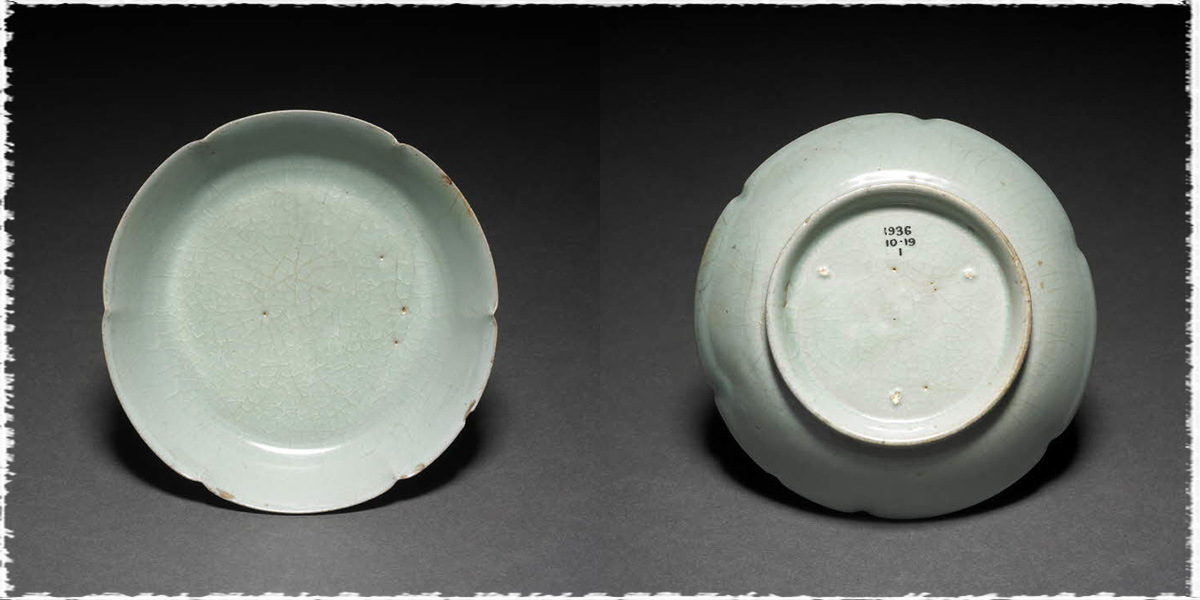The Song Dynasty was a golden age in the history of China’s porcelain industry. There were five famous kilns: Ru, Guan, Ge, Jun, and Ding.
Although these five famous kilns could not include all the achievements of the Song Dynasty, they represented the pinnacle of the porcelain production at the time.
Ru Kiln is the most famous of the five great kilns, and it was known as “Ru Kiln is the champion” in the history of Chinese ceramics. Ru wares show elegant and simple artistic features and style.
The Ru kiln only works for about 20 years, so the wares are valuable. There are less than 100 authentic products handed down to this day, 17 in the Beijing Palace Museum, 21 in the Taipei Palace Museum, 8 in the Shanghai Museum, and 7 in the British David Foundation; more than ten pieces are scattered throughout the United States, Japan, and private collections.
The previous article introduced the overview of the five famous kilns, this time, we walked into the world of Ru wares together. Let’s take a look at these classic Ru wares.
Ellipse dish with celadon glaze
H. 2.7 cm;Diam. of rim 9.8 cm;Diam. of base 4.2 cm
The ware is oval, with a slightly concave mouth and no foot, and the bottom is concave into a circle with three marks. The ware is embellished with printed decorations. The type, decoration method, and size are similar to Ru ware in the David Foundation’s collection.

Feng-hua mallet vase with bluish-blue glaze
H. 22.4 cm;Diam. of rim 4.4 cm;Diam. of base 8.6 cm
It has a long neck, a flat bottom, and a round mouth and mouth inlaid with copper. The bottom has five marks and is inscribed with a poem by Emperor Qian Long and the word “Fenghua” on the left side of the poem. Fenghua’s full name is Fenghua Hall, the Royal Palace of the Song dynasty. Someone inferred that the Palace used the ware at that time.
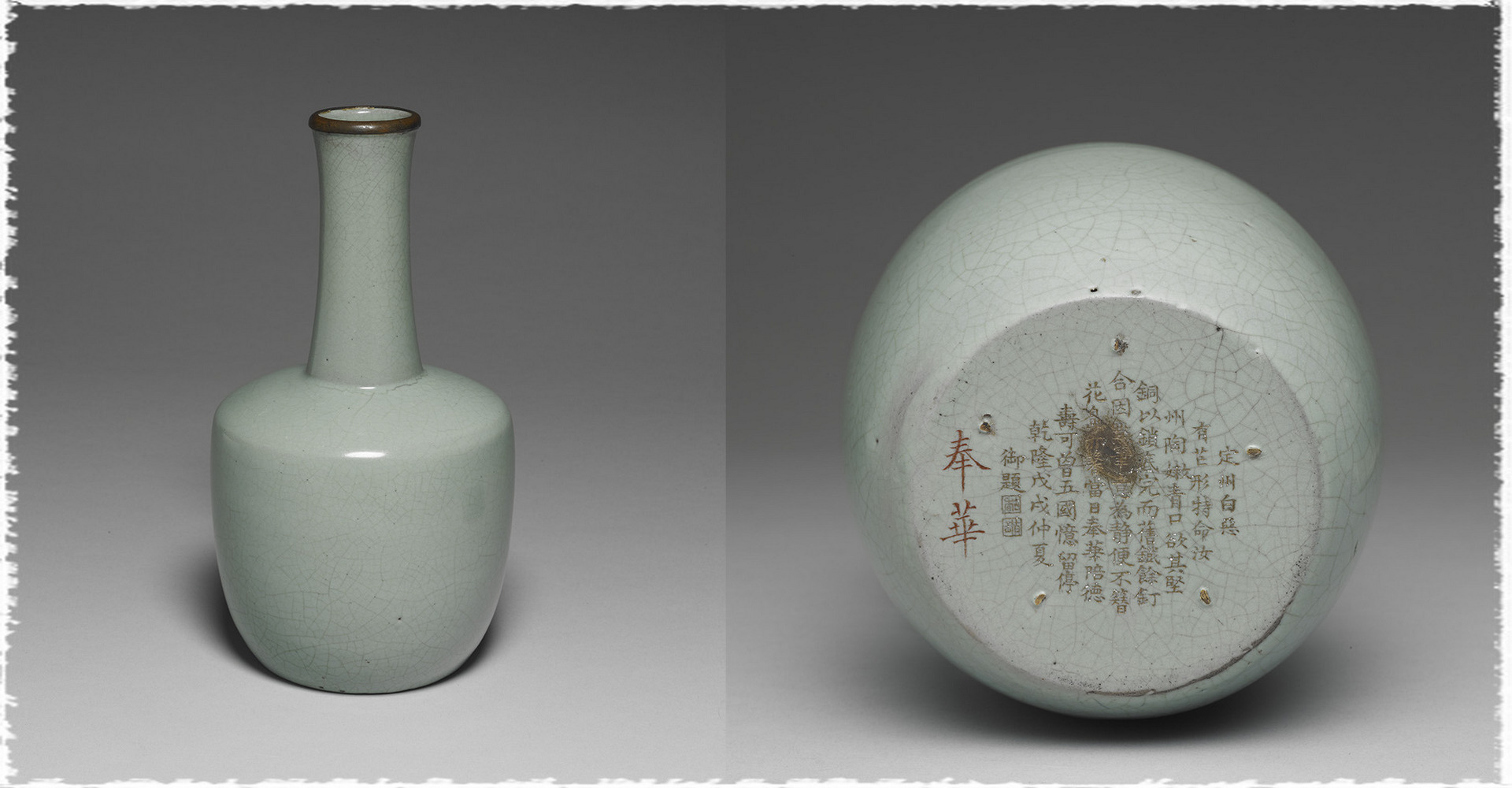
Bingcai dish with celadon glaze
H. 1.5 cm;Diam. of rim 10.9 cm;Diam. of base 8.2 cm
A round mouth, a shallow wall, and a flat bottom. Celadon glaze covers the entire body. The word “Cai” is engraved on this piece of Ru ware, and the word “Bing” is on the right of the word “Cai.” The engraving method is obviously distinct, despite all the words being deeply engraved. Some academics hypothesize that the word “Cai,” which could be the Cai jing’s mark, is the owner’s last name.

Three-footed furnace with celadon glaze
H. 12.9 cm;Diam. of rim 18 cm;Diam. of base 17.8 cm
This furnace is imitated in the shape of the Han Dynasty. It has a straight mouth and a flat bottom; the caliber and bottom diameters are similar, with three feet on the bottom. The feet are unglazed, and the body is covered in celadon glaze. There are five minor nail marks on the outsole. And some cracks are glaze flaws, but because they are exciting and naturally occurring, they are gradually considered unique decorations. Only three known Three-Feet Ru wares are currently on display at the Cincinnati Museum in the United States, the David Foundation in London, England, and the Imperial Palace Museum.
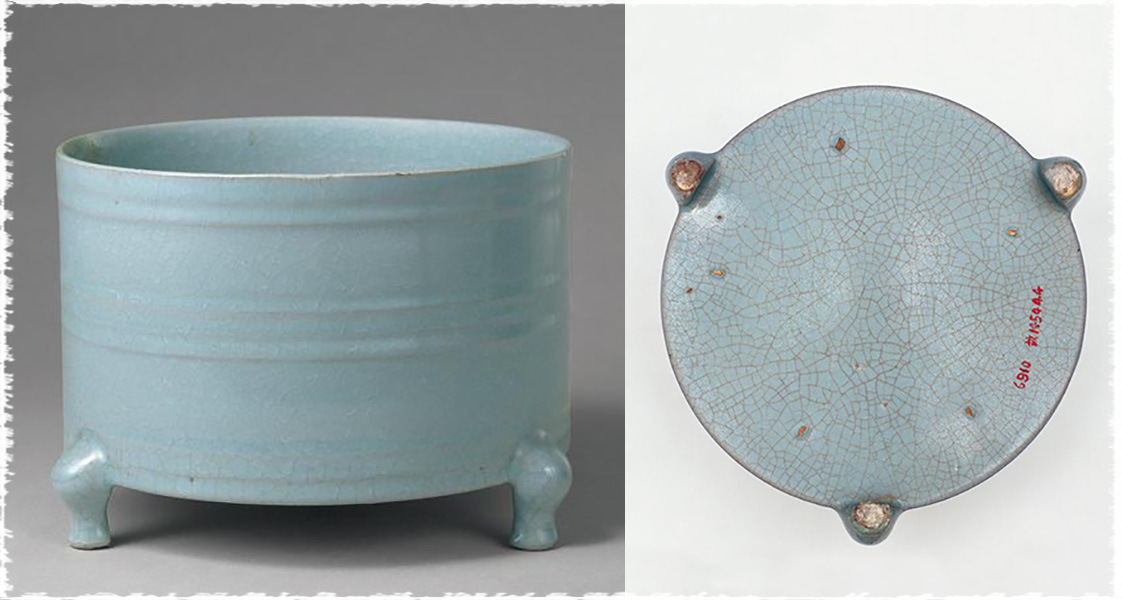
Bowl with celadon glaze
H. 6.7 cm;Diam. of rim 17.1 cm;Diam. of base 7.7 cm
Belly with a deep arc. The whole body is covered in a bright, pure, slightly cracked celadon glaze. There are five minor marks on the outsole, and the poem of Emperor Qian Long is engraved.
This bowl is a beautiful rare treasure with a regular shape and delicate quality. The glaze color is like the blue sky reflected in the lake. There are currently only two Ru ware bowls; the David Foundation collected another in London, England.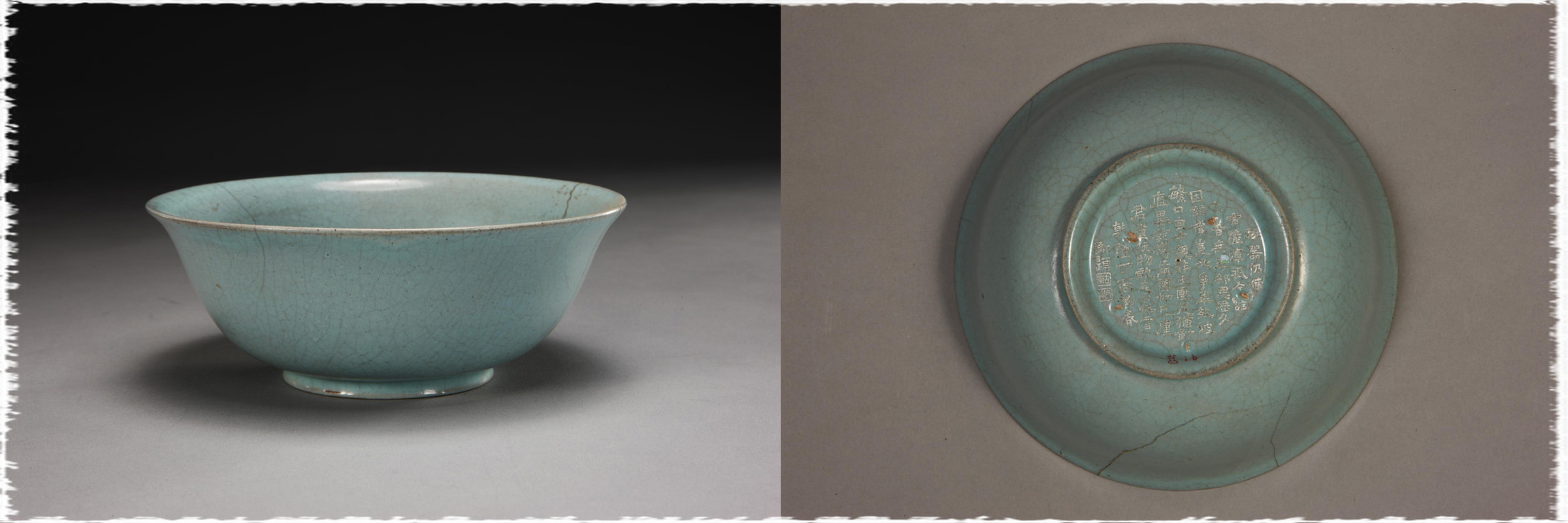
Three-footed furnace coaster with celadon glaze
H. 4 cm;Diam. of rim 18.5 cm;Diam. of base 16.9 cm
Shapes with a shallow abdomen, a flat bottom, and three feet. Inside and out, the celadon glaze is covered with cracks in the glazed surface. There are five minor marks on the outsole.

Round dish with celadon glaze
H. 3.3 cm;Diam. of rim 13 cm;Diam. of base 8.9 cm
The Beijing Palace Museum keeps this ware. The shallow arc wall with a celadon glaze covers the entire body, which is smooth and cracked. In the middle of the outsole is the letter “Yi” and three tiny marks that appear to be sesame seeds.
The word “Yi” is carved on the outsole of the ware. It’s thought to have been carved during the Qing Dynasty. The Emperor of the Qing Dynasty once classified the palace collections. Therefore, these collections are engraved with “Jia”, “Yi” and “Bing” (like A, B, C).
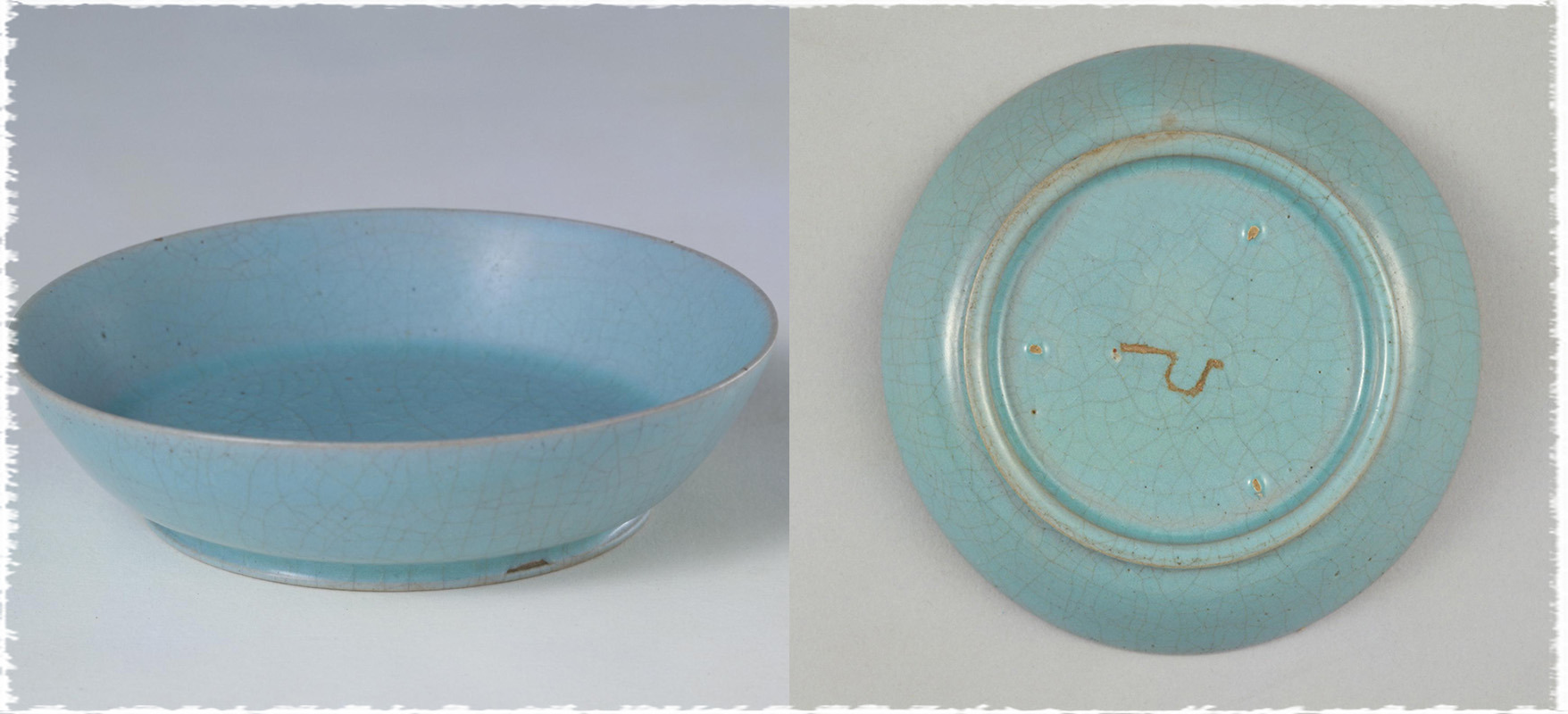
Round dish with celadon glaze
Diameter: 12.2 cm.
Tsuyoshi Inukai, Japan’s 29th Prime Minister, once kept this dish. The glaze and cracks all over the body are minor marks as delicate as needles.
An old gold foil repair is on the mouth’s edge. Apply a layer of paint underneath, followed by a layer of gold on top of the previous layer. The gold repair on this ware should have been repaired in Japan nearly a century ago.
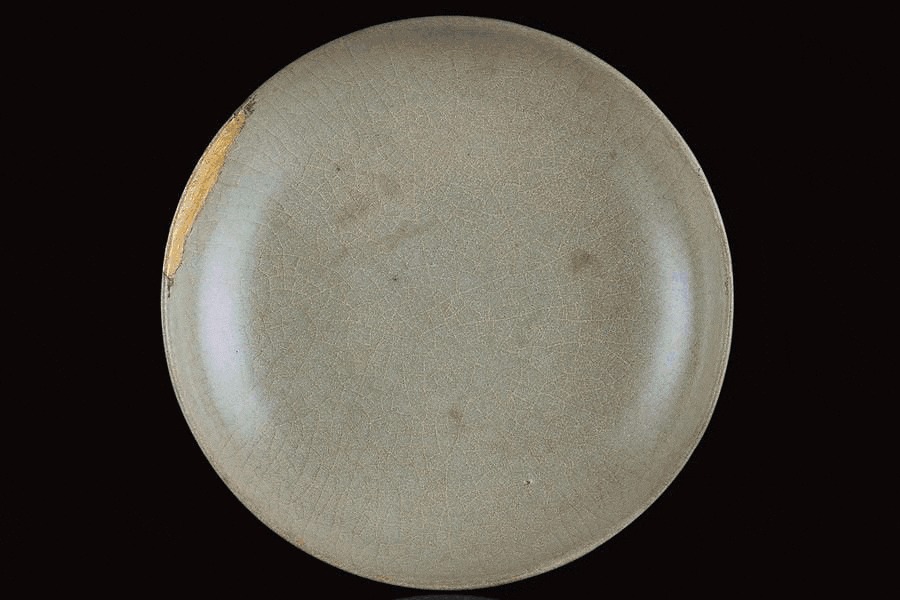
Teacup with celadon glaze
Diameter: 10.2 cm.
Marks are located on foot. Most Ru wares’ marks can be seen inside the foot; this one is special.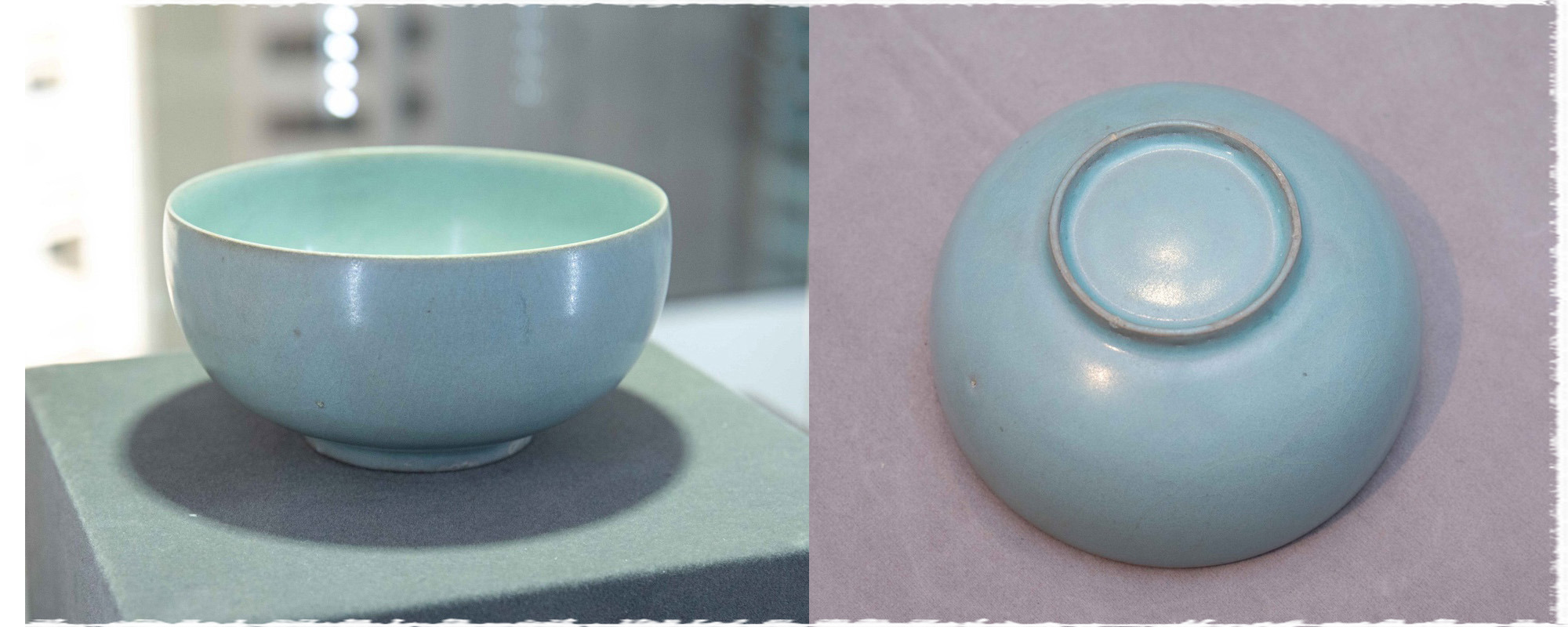
People always think that the glaze on Ru wares is light green. In fact, it will differ in production. Some are gray, while others are relatively blue. This one is wonderful, with a slight pink undertone.
Warming bowl with celadon glaze
H. 10.4 cm;Diam. 16.2 cm;Diam. of base. 8 cm
In the Song dynasty, warming bowls and ewers were paired wine vessels for daily use.
The even curves on its wall follow the foliated contour of the mouth rim. The vessel is coated in a consistent and smooth celadon glaze, displaying a bluish-green color. Both its interior and exterior walls are covered with crackles stained brown. With a high, splayed ring foot, this piece has five marks along the edge of its base. 
Although these Song Dynasty wares are beautiful, they are basically the treasures of the museums. Even if occasionally sold by private collectors, most people cannot pay the price in the millions or even tens of millions.
These Ru wares are the cultural relics that carry history. Modern Ru wares may not be able to capture the beauty of the Song Dynasty fully. However, thanks to improvements in craftsmanship and technology, modern Ru wares increasingly resemble Song Dynasty Ru wares in features that are more in keeping with current fashion. A large number of Ru ware enthusiasts enjoy them as well.
Just Like
If you enjoyed this article, you might also like to read the following articles:
A description of the five famous kilns
Yao Bian (furnace transmutation) in Teaware
 Exploring the Charms of 2024 Spring Tea Garden with Angel
Exploring the Charms of 2024 Spring Tea Garden with Angel Yingde Black Tea
Yingde Black Tea Matcha vs. Green Tea Powder
Matcha vs. Green Tea Powder

